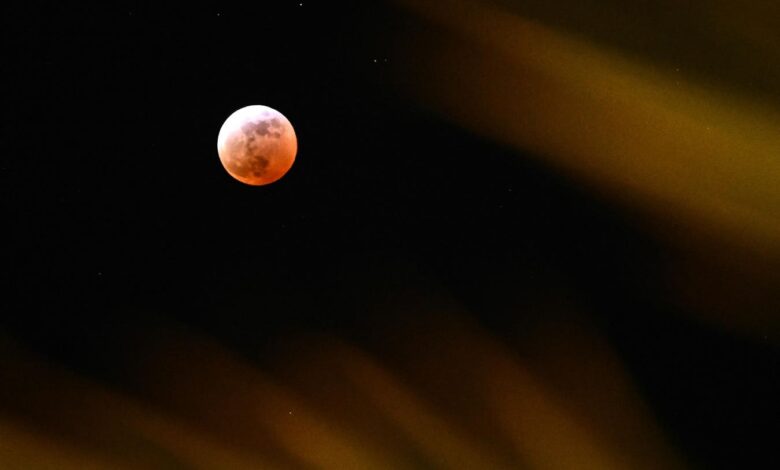When To See The Next ‘Blood Moon’ Eclipse In North America

📝 usncan Note: When To See The Next ‘Blood Moon’ Eclipse In North America
Disclaimer: This content has been prepared based on currently trending topics to increase your awareness.
A partial lunar eclipse is seen above the fronds of a palm tree during the Blood Moon Lunar Eclipse in Palm Springs, California, on March 13, 2025. (Photo by Patrick T. Fallon / AFP) (Photo by PATRICK T. FALLON/AFP via Getty Images)
AFP via Getty Images
The next total lunar eclipse will occur on the night of March 2-3, 2026, with western North America in the prime position to experience a “blood moon.”
That’s in contrast to Sept. 7-8, 2025, when a total lunar eclipse was visible from Asia, Australia and the Pacific — with Europe getting a glimpse at moonrise.
What Is A Total Lunar Eclipse?
During the event — which sometimes come in triads spread across a year — the edge of Earth’s shadow can be seen gradually covering the lunar surface. As it loses its brightness, it begins to turn a reddish color, before turning completely reddish as the whole of the moon is within Earth’s shadow — totality. Known as a “blood moon,” the phenomenon is caused by sunlight bending through Earth’s atmosphere — the same physics that make sunsets red — and refracting onto the lunar surface.
For those in Asia, Australia and the Pacific, totality lasted for 82 minutes.
A visibility map of the total lunar eclipse on March 3, 2026.
U.S. Naval Observatory
When Is The Next Total Lunar Eclipse?
The next total lunar eclipse will occur on March 2-3, 2026, and this time, North America will see it. From North America, South America, Australia and East Asia, the lunar surface will turn reddish for 58 minutes.
Visibility will depend on longitude. Eastern cities like New York will see only a sliver of totality before moonset, while the western U.S. and Canada will enjoy the full spectacle high in the sky. The clear skies of the desert Southwest U.S. and Hawaii offer the best chance of a clear sky at that time of year.
Total Lunar Eclipse Calendar
The March 2-3, 2026, total lunar eclipse will mark the third in a triad of consecutive total lunar eclipses within a lunar year. Although more common than total solar eclipses, they are relatively rare events, with no total lunar eclipses for a few years after March 2026 (date from AstroPixels).
- March 2-3, 2026: 58 minutes (Asia, Australia, Pacific, Americas)
- Dec. 31, 2028: 71 minutes (Europe, Africa, Asia, Australia, Pacific)
- June 26, 2029: 102 minutes (Americas, Europe, Africa, Middle East)
- Dec. 20, 2029: 54 minutes (Americas, Europe, Africa, Asia)
The phases of a total lunar eclipse.
getty
The ‘Countdown Eclipse’ In 2029
The total lunar eclipse that follows the next one in March 2026 is intriguingly timed. It comes on Dec. 31, 2028–Jan. 1, 2029, delivering a spectacular New Year’s Eve show. Visible across much of Europe, Africa, South America, and the eastern U.S., it promises a fittingly dramatic send-off to the decade. Totality then will last for over an hour, painting the moon red as fireworks erupt on Earth below.
In eastern North America, totality will occur shortly after moonrise in the early evening of New Year’s Eve, according to Timeanddate.com. However, for those in Europe, totality will be ongoing as the clock strikes midnight and begins the 2030s.
Wishing you clear skies and wide eyes.




